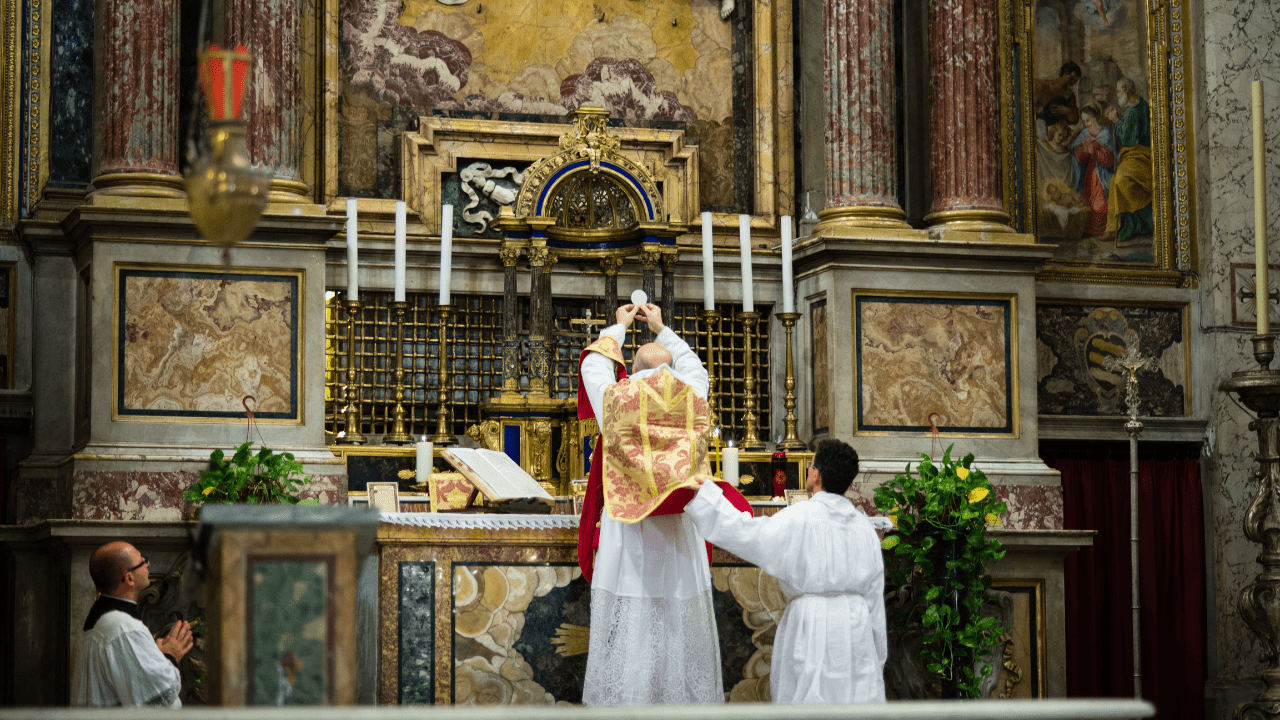In Latin, ad orientem means “to the east.” In the Catholic liturgy, it refers to the priest and the congregation facing the same direction during Mass. Traditionally, churches were built so that everyone faced east together. While many newer churches don’t face east, the phrase ad orientem continues to be used whenever the priest and the people face the same direction.
Ad orientem was — and still is — a feature of the Traditional Latin Mass. You can also celebrate the New Mass this way, although in most New Masses the priest faces the congregation. Contrary to common belief, the Vatican II documents didn’t call for this change of direction; it came several years later.
Some Catholics strongly object to the “old” ad orientem style of Mass. They complain that the priest “turns his back on the people.” Other Catholics strongly support ad orientem becoming standard again in the New Mass. Of course, Traditional Latin Mass attendees still have it.
There are some good reasons to fully bring back ad orientem in the New Mass. Here are a few.
1. It puts more focus on Christ
There is nothing inherently wrong with the priest and people facing each other during Mass. But there can be a tendency to focus too much on the priest. Many priests feel more pressure to be funny, clever, or creative when everyone is looking at them. At times, it feels like the relationship between an actor and his audience.
When the priest faces the same direction as the congregation, many of these pressures are lifted. He is focused on the sacrifice before him. He’s talking not to the people, but to Christ. The people — no longer in a position to analyze the facial expressions of the priest — can more easily turn their attention to Christ.
Of course, the priest has always faced the people during moments of the Mass, such as the homily. But that’s because those are times for instruction. The rest of the Mass is for a more intimate union with Christ in the Eucharist.
2. It represents our pilgrimage to heaven
Let’s face it, in our consumerist culture, we need frequent reminders that earth is not our final home. We are made for eternal joy in heaven!
The beautiful thing about ad orientem is that it reminds us that we are pilgrims on a journey back to God. The “east” represents Jerusalem — not only the earthly one, but the heavenly Jerusalem.
Throughout history, many Christians believed that Christ would return from the east. And the east is where the sun rises — a powerful symbol of the resurrection.
3. It’s a long-standing tradition
Not everything that’s traditional needs to endure. But when it comes to the liturgy, you should be VERY careful before changing anything, even those elements of the Mass subject to change.
We live in a world that feels increasingly cut off from the past. We need things in place to keep us connected to our great Catholic heritage.
Countless saints and sinners attended ad orientem Masses for centuries. There’s something consoling about sharing this tradition with them.
Again, all of this is not to say that Mass facing the people is bad. Many people derive a lot of spiritual fruits from such Masses.
But has it really improved the Church overall? That’s a question worth debating.







